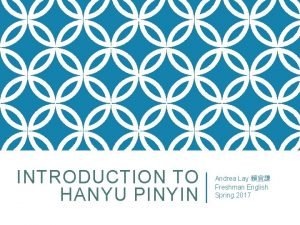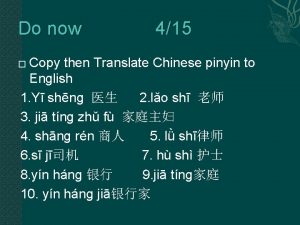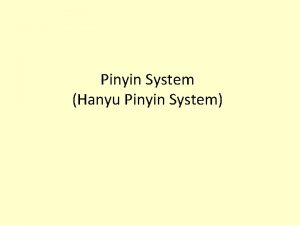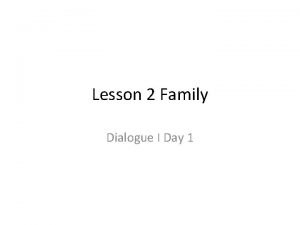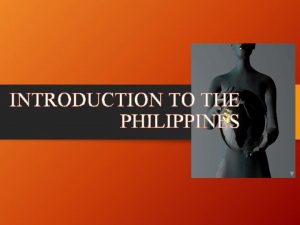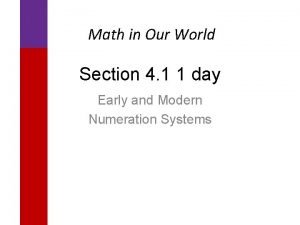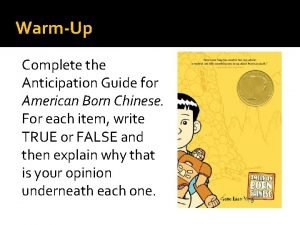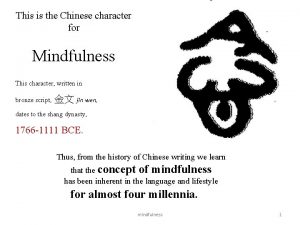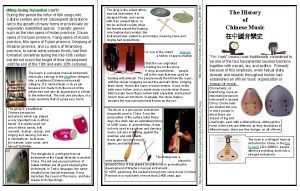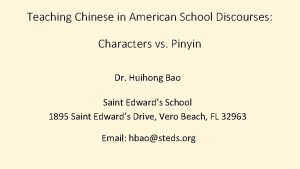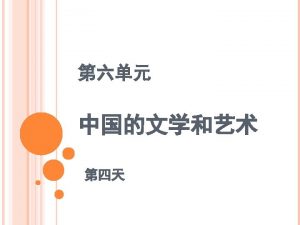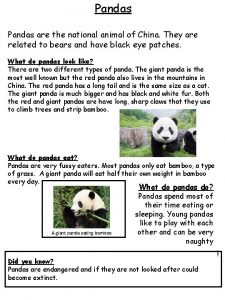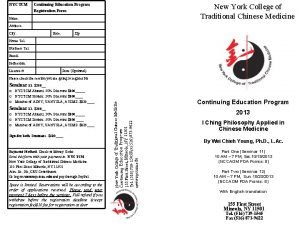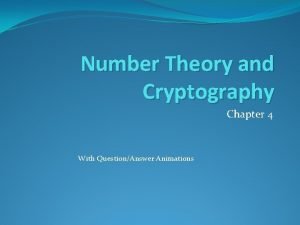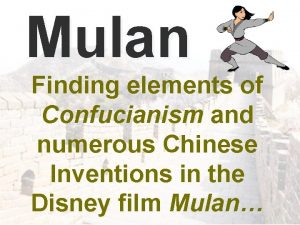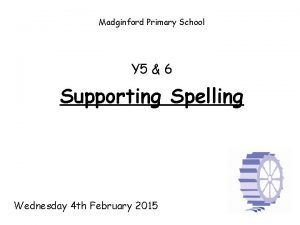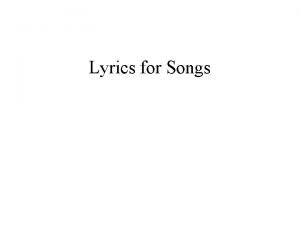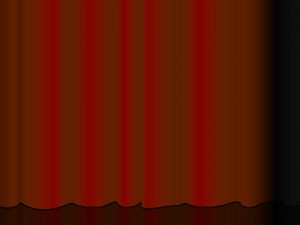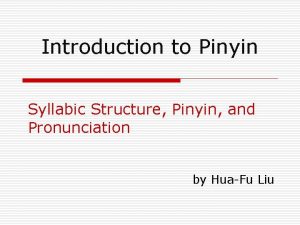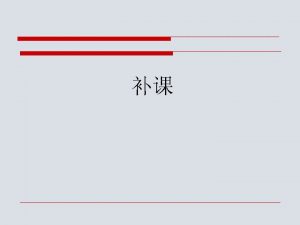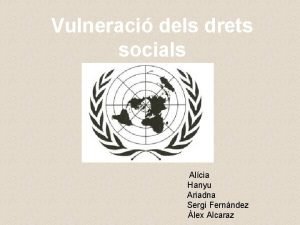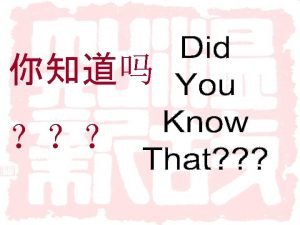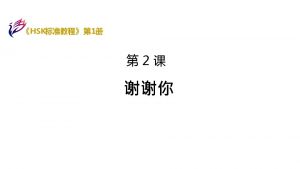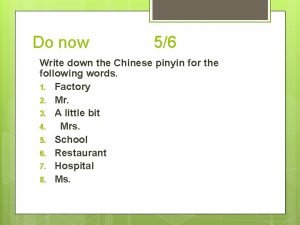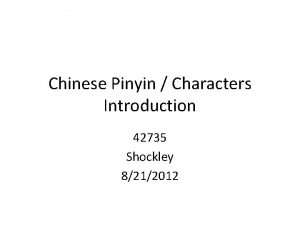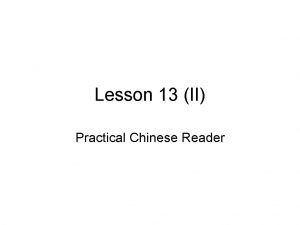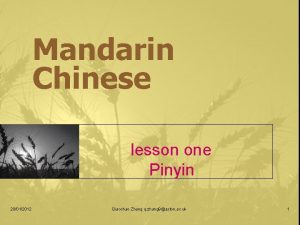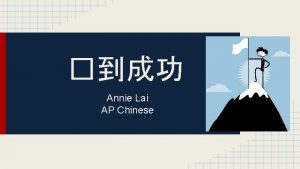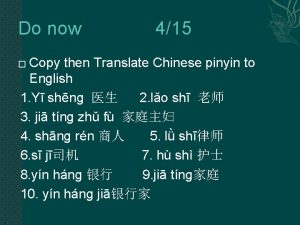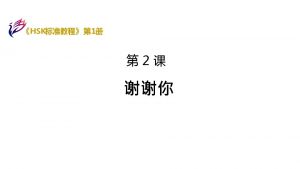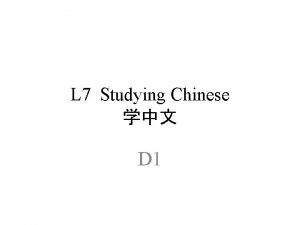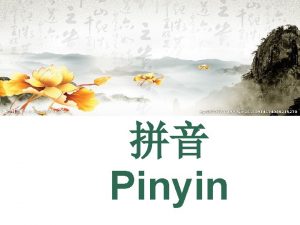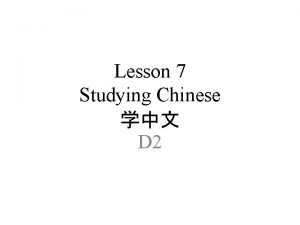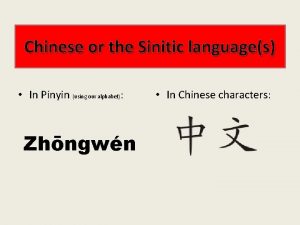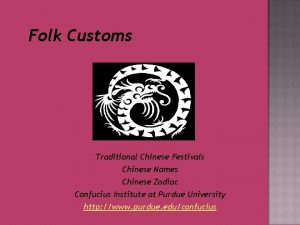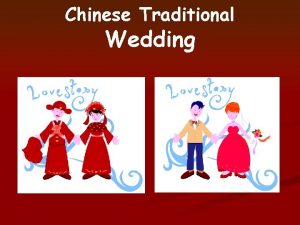Pinyin System Hanyu Pinyin System Chinese is called

































- Slides: 33

Pinyin System (Hanyu Pinyin System)

Chinese is called Hanyu in Chinese because it is spoken by the Han people, the largest ethnic group in China.

Pinyin was developed in Mainland China in the 1950 s and officially adopted in 1979.

Pinyin, which literally means “spell the sounds, ” is used to help people learn the pronunciation of characters or look up words in dictionaries, and type Chinese characters on computer.

Pinyin System. It uses the 26 letters of the Latin alphabet and tone marks to represent the sounds of Chinese. Many of the letters are pronounced much as they are in English, while others are pronounced quite differently.

• Pinyin consists of 21 initials, 35 finals and 4 tones. • Initials: b, p, m, f, d, t, n, l, g, k, h, j, q, x, zh, ch, sh, r, z, c, s •

Initials b • d • g • • p t k m n h f l

• • Initials j q x

Initials • • z c s • The letter z sounds like “ds” in English “lads. ” • The letter c sounds like “ts” in English “cats. ” • The letter s is very similar to “s” in English “son. ”

Initials • zh ch sh • r

Finals • Finals: • Simple finals: a, o, e, I, u, ü • Compound finals: main vowel + secondary vowel • Nasal finals: finals ending with n and ng

Structure of Pinyin Syllable • A Chinese syllable has three elements: • Initial, final, and tone. • Tone • Initial Final • • mǎ

Tones and Tone Marks • Chinese is a tonal language. The 4 basic tones in Mandarin Chinese are: • 1 st Tone 2 nd Tone 3 rd Tone 4 th Tone • High & level rising dipping falling • down & up • __ / ˅ • Neutral tone: light, no marking: ma

Tones and Tone Marks • • Different tones indicate different meanings For example: 1 st 2 nd 3 rd 4 th mā má mǎ mà mother hemp horse to scold Māmā mà mǎ Mother is scolding the horse. Mǎ mà māmā The horse is scolding mom. bā eight bá to pull out bǎ dā dá dǎ to build up to answer to hit bà dà big

15

a Finals o e i u ü 16





b, p, m, f + o bō bó bǒ bò wave uncle lame thumb pō pó pǒ pò mō mó mǒ mò fō fó fǒ fò

Read the following tongue twister • • • bóbo uncle bàba dad mǎ horse bóbo de mǎ bàba de é Uncle’s horse, Father’s goose.







Read the following tongue twister • • bóbo bàba mǎ pá dǎ tǔpō lǜpō uncle dad horse to climb to hit, play muddy slope green water

Read the following tongue twister • • • Bóbo de mǎ Uncle’s horse, Bàba de é Father’s goose. Mǎ pá tǔpō The horse is climbing a muddy slope, É dǎ lǜ The goose is playing in the green water.



 Consonant例子
Consonant例子 Translate
Translate Whats pinyin
Whats pinyin Pinyintones
Pinyintones San zi jing
San zi jing Baba pinyin
Baba pinyin Pinyin
Pinyin Primary 2 malay worksheets
Primary 2 malay worksheets Early chinese traders who visited mindoro called our nation
Early chinese traders who visited mindoro called our nation Role of pharmacognosy in ayurveda
Role of pharmacognosy in ayurveda The chinese numeration system is an example of
The chinese numeration system is an example of American born chinese anticipation guide
American born chinese anticipation guide Chinese name apa citation
Chinese name apa citation Tung shin tcm doctor
Tung shin tcm doctor Chinese symbol for mindfulness
Chinese symbol for mindfulness Gong percussion instruments
Gong percussion instruments Collectivization ap world history
Collectivization ap world history Chinese communist revolution ap world history
Chinese communist revolution ap world history Chinese university of hong kong library
Chinese university of hong kong library Most complicated chinese character
Most complicated chinese character Ivitamin studio chinese
Ivitamin studio chinese Chinese remainder theorem rsa
Chinese remainder theorem rsa Rocket inventor
Rocket inventor Translate words
Translate words Chinese possessive pronouns
Chinese possessive pronouns Chinese pascal triangle
Chinese pascal triangle Are pandas the national animal of china
Are pandas the national animal of china Ny college of traditional chinese medicine
Ny college of traditional chinese medicine The number 311-38 is divisible by prime numbers:
The number 311-38 is divisible by prime numbers: Mulan confucianism
Mulan confucianism English language vce study design
English language vce study design Chinese madginford
Chinese madginford In christ along lyrics
In christ along lyrics Chinese remainder theroem
Chinese remainder theroem
